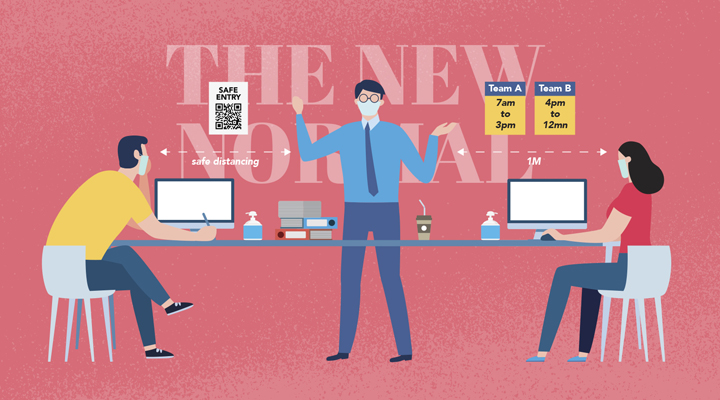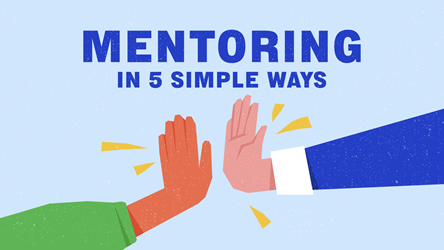Adjusting Back To Work In The Office In The New Normal

SAFETY FIRST
Communicate the business continuity plans for working safely in the office. These may include changes such as staggered work hours, staggered break hours and split-team arrangements, which may take some time for employees to get used to.
Employees should be familiarised early with new measures, such as using Safe Entry registration, so that they can manage their time and expectations when returning to the workplace.

KEEPING UP MORALE
The constant changes coupled with limited social interaction may make employees feel disengaged and unproductive.
Offer: Explanations to answer “why”
Simply informing employees about changes and giving them some time to make adjustments is not enough to ensure compliance.
Many of the changes are inconvenient, and according to communication expert Nancy Duerte, people won’t try difficult new things unless they are motivated to do so. She advises showing employees the “why” behind the measures needed, so that they can understand the reason behind each process. When employees understand and believe the change serves a greater purpose, compliance is more likely to follow.
Keep your team’s spirits up with the following:
Ask: How are you feeling?
HR experts Adecco recommend checking in regularly to find out how staff are coping with the new arrangements. This will keep them emotionally engaged, and gives you an early indication if there are problems that need to be addressed.
Ask: How are we doing?
Strong teams trust and empower one another, share common goals and have a strong sense of belonging, research by Bain and Company shows.
One way to bring the team together is by sustaining a strong sense of identity at work. To do this, encourage reflection and remind your team of the common goals by asking questions such as “What are our priorities?” and “How are we doing on them?”
These questions help align expectations across the team, which can strengthen trust and belonging, and motivate them to work towards a common goal.
Offer: Opportunities to bond
Allocate time for employees to chat and catch-up at the start or end of meetings – especially if there are team members who are working remotely.
When celebrating birthdays and work achievements, include those who are working from home by using apps such as Skype and Zoom.
All this will help the team overcome the barriers of physical distance, and help employees remain connected to each other and to the organisation.

BE AGILE TO ADAPT
COVID-19 has created shifts in employees’ preferences and expectations, and changed how we live and how we work. Since the threat of COVID-19 will likely remain for a while, workplaces will have to reinvent their work models to be more agile and adapt to changing environments.
COVID-19 has taught us two things: to make full use of technology and work in small teams. Building on existing technologies helps to increase efficiency and prepare staff for a future where teams may need to work remotely again.
Accelerate digital efforts by exploring areas of work where technology will improve processes, build employee engagement and ramp up productivity, McKinsey & Company recommends. Invest in the necessary digital tools and training so that staff are able to work well, whether at home or in the office.
Build agile teams that are smaller and multi-disciplinary. Working in small teams can make work operations more adaptable, with quicker decision-making processes. Different teams with members of varying skillsets can be formed to collaborate with each other to meet various needs. For example, frontline workers may have to work directly with customer feedback and security teams for a quicker turnaround time during COVID period.

UNDERSTAND THAT CHANGE TAKES TIME
Adjusting back to the workplace will take time, just as adjusting to working from home during the circuit breaker measures did.
Leaders and supervisors can create a psychologically safe environment for team members to talk about the difficulties they are facing. With empathy and active listening skills, supervisors will better understand what employees are dealing with and how well they are coping, and refer help if needed.
Ultimately, working in the new normal is bound to meet with some hiccups. Give yourself and your staff time to adjust to the changes in place. A little empathy for all will go a long way in keeping the team together for the future.
- POSTED ON
Jul 7, 2020
- TEXT BY
Fiona Liaw
Jane Quek, MHA
Tan Wei Ying, HTBSC, MHA








